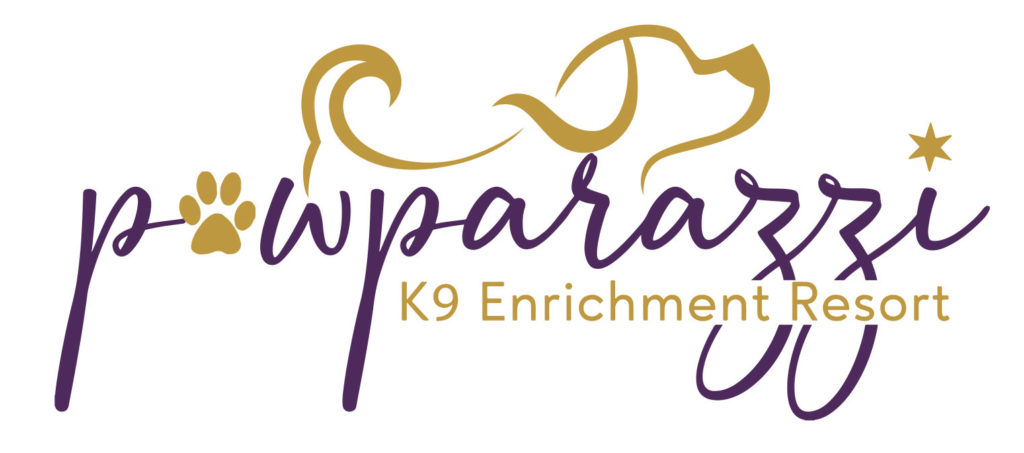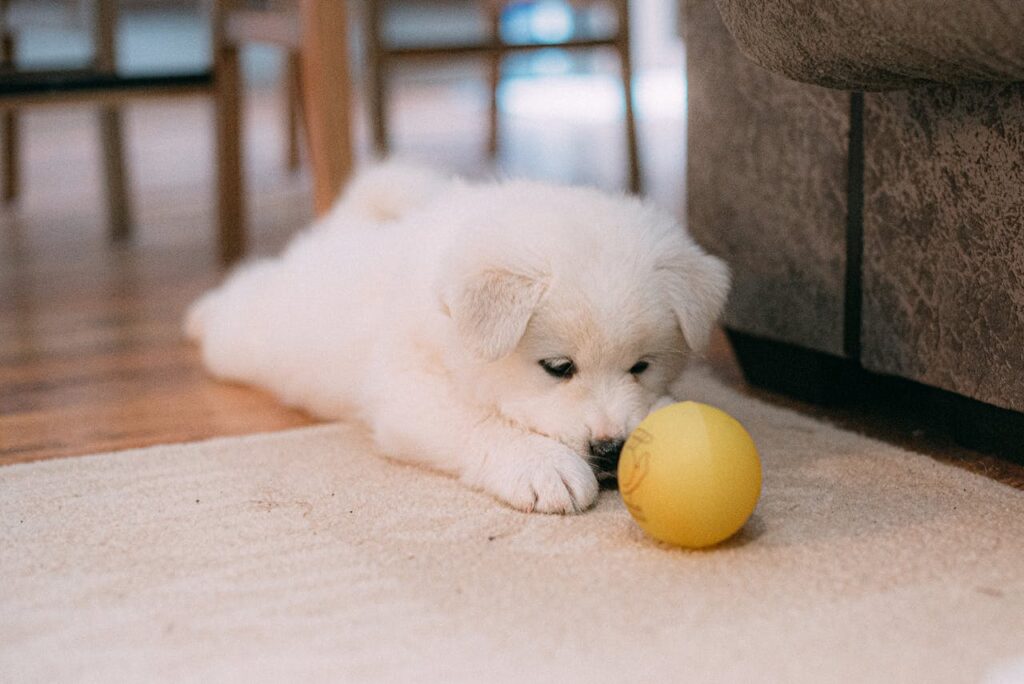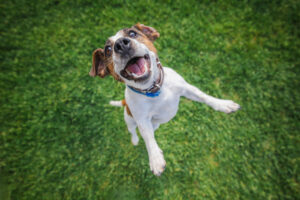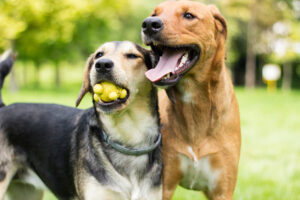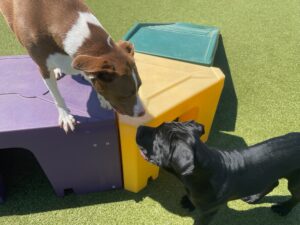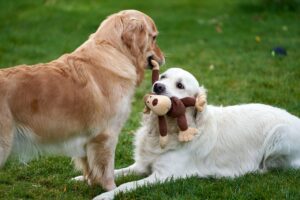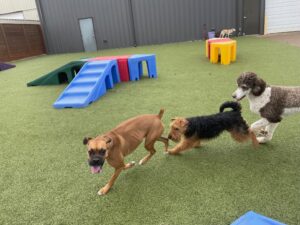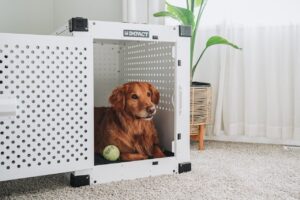Did you know that up to 20% of dogs suffer from separation anxiety, leading to behavioral issues that can be as distressing for the owner as they are for the pet? Imagine the heartache of a dog that can’t bear to see its beloved human leave, even for a short walk. This condition is more prevalent than many realize, highlighting the urgent need for effective strategies to address the problem. Understanding the nuances of this anxiety is the first step toward helping our furry companions cope with temporary solitude.
A robust history of dog-human relationships highlights our deep bond, yet modern lifestyles contribute to this anxiety phenomenon. Studies reveal that approximately 70% of pet parents have tried various methods to alleviate their pet’s stress. Providing a safe space like a crate, incorporating soothing routines, or using natural calming aids can effectively reduce anxiety levels and make the separation manageable. Utilizing these strategies not only comforts the dogs but also reaffirms our dedication to their well-being.
- Create a safe space with comforting items for your dog.
- Develop consistent and soothing routines to reduce stress.
- Use natural calming aids like pheromones or herbal solutions.
- Employ distraction techniques through engaging toys or activities.
- Seek professional advice for tailored strategies and support.

Dog Separation Anxiety Help: 5 Ways to Ease Stress
Separation anxiety can be tough for dogs. One effective way to help is by creating a safe space. A cozy crate with a soft blanket can provide comfort. Dogs like to feel secure, and this can relax them while you’re away. Establishing this area can reduce their stress considerably.
Next, developing a soothing routine is beneficial. Regular schedules are comforting for pets. Walking your dog before leaving can tire them out, reducing anxiety. Consistent feeding times also create a calming routine. This predictability can make departures less daunting for your furry friend.
You can also try natural calming aids. Options like pheromone diffusers or sprays can make a difference. Some dogs respond well to herbal solutions, like chamomile or lavender. These aids create a more calming atmosphere in your home. You’ll find that even these small changes can significantly impact your dog’s mood.
Distraction techniques offer another angle to ease stress. Provide toys that challenge and stimulate your dog mentally. Treat-filled puzzles are excellent for this purpose. They keep your dog occupied and divert their attention from your absence. By engaging their minds, you help them cope better with alone time.
Create a Safe Space
Creating a safe space for your dog can significantly reduce separation anxiety. Start with a designated area in your home that feels secure and comfortable. A cozy crate with a soft bed and familiar toys can be ideal. Dogs often feel more at ease in smaller spaces where they can retreat when they feel anxious. This helps them feel protected and less stressed.
Adding some personal items to the space can be calming. Items that smell like you, such as an old shirt or blanket, can provide comfort. The familiar scents help your dog feel closer to you even when you’re not there. This small touch can go a long way in easing their anxiety. Consider rotating these items regularly to keep the scent fresh.
Ensure the safe space has a quiet environment. Avoid placing the crate in high-traffic areas or noisy locations. A peaceful spot allows your dog to rest and relax without disturbances. You might also use a white noise machine to mask external sounds. This can create a more consistent and soothing backdrop.
It’s important to introduce the safe space gradually. Encourage your dog to explore and spend time there while you’re at home. Use treats and positive reinforcement to make the area inviting. Over time, your dog will associate the space with comfort and security. This will help reduce their anxiety when you leave the house.
Develop a Soothing Routine
Developing a soothing routine can greatly help dogs with separation anxiety. Start by establishing a consistent schedule for feeding, walking, and playtime. Dogs thrive on predictability because it gives them a sense of security. Regular routines help them understand what to expect and when. This consistency can lessen their anxiety over time.
A morning walk is a great way to begin the day. Exercise tires your dog out, making them more relaxed when you leave. This activity also stimulates their mind, providing positive mental engagement. Following the walk, spend a few minutes in calm play or cuddles. Such interactions strengthen the bond and create a positive start to the day.
Incorporating quiet time is also essential. Designate parts of the day for restful activities like napping or gentle chewing on a toy. You can even play some calming music designed for dogs. This encourages a peaceful environment and helps your dog unwind. Routine quiet periods aid in reducing overall stress levels.
Gradually adding short periods of alone time can ease anxiety. Start by leaving your dog alone for a few minutes, then slowly increase the duration. Use a command or signal to indicate that it’s alone time, creating a clear cue. Reinforce positive behavior with treats or praise when you return. Over time, your dog will become more comfortable with being by themselves.
Employ Natural Calming Aids
Employing natural calming aids can be an effective strategy for easing dog separation anxiety. These aids can include products like pheromone diffusers and sprays. Pheromones are chemicals that mimic a dog’s natural calming scent, often used to comfort puppies from their mother. Plugging in a diffuser in your home can create a soothing environment for your pet. It helps them feel safe and more relaxed when left alone.
Herbal solutions are another option worth exploring. Chamomile and lavender are popular for their calming properties. These herbs can be found in treats or sprays that are safe for dogs. By integrating these into your dog’s routine, they can experience less anxiety during separation. Always ensure the products are pet-safe and consult with a vet if unsure.
Consider using calming music specifically designed for dogs. Music can have a powerful calming effect, and there are playlists available that cater to pet relaxation. Playing soft, slow music can mask anxiety-inducing noises like traffic or construction. This auditory distraction can help lower your dog’s stress levels. It creates a peaceful ambiance, encouraging your pet to relax.
Essential oils can also aid in reducing stress, but they must be used with caution. Not all essential oils are safe for pets, so research is crucial. Oils like lavender and cedarwood are generally considered safe when diluted properly. Adding a few drops to a diffuser or mixing with water in a spray bottle can help calm your dog. Monitoring your dog’s reaction is important to ensure their comfort and safety.
Finally, maintaining a calm demeanor yourself sets the right tone. Dogs often pick up on their owner’s emotions, so staying calm helps them stay calm too. Adding these natural aids to a consistent routine can make a significant difference. Your dog’s stress levels will decrease, resulting in a happier, more relaxed pet. This strategic approach benefits both dogs and their owners, fostering a harmonious environment.
Utilize Distraction Techniques
Distraction techniques can effectively help manage your dog’s separation anxiety. Toys that challenge and engage your dog mentally are a great start. Consider offering interactive toys like puzzle feeders filled with their favorite treats. These toys not only keep your dog busy but also provide a rewarding experience. By focusing on the puzzle, their mind stays occupied, reducing feelings of anxiety.
A consistent rotation of toys is also beneficial. If your dog has access to the same toys every day, they might become bored. Introducing a new toy or rotating them periodically can maintain their interest. This element of surprise keeps playtime fresh and exciting. It ensures your dog looks forward to their solo play sessions.
Including exercise is another key distraction technique. A tired dog is often a calm dog. Taking your dog for a long walk or playing fetch before you leave can lower their energy levels. This physical exertion helps them relax and may lead to a restful nap. A sleepy dog is less likely to focus on your absence.
You can also enrich their environment with sensory stimulation. Placing a bird feeder outside a window or using a dog TV channel can offer visual distractions. These new and entertaining sights can captivate your dog’s attention. While they watch or listen, their mind is engaged elsewhere. Your dog gets a break from worrying about being alone.
Lastly, music or recorded sounds specifically designed for pets can serve as a distraction. Some dogs find comfort in listening to soft music or nature sounds. These auditory cues can soothe their nerves, masking any unsettling noises around the neighborhood. Combining these with the other techniques creates an effective anxiety-reducing strategy.
Seek Professional Advice
When managing dog separation anxiety becomes challenging, seeking professional advice is a wise step. A veterinarian can assess your dog to rule out any underlying health issues. Sometimes symptoms that mimic anxiety could be due to pain or illness. A thorough check-up ensures you address the root cause effectively. This first step is essential for successful anxiety management.
Dog trainers or behaviorists offer valuable insights into your pet’s behavior. These professionals have experience in devising personalized strategies to address anxiety. With their guidance, you can learn specific techniques to calm your dog. They also provide support in implementing gradual desensitization exercises. This method helps your dog get accustomed to being alone without fear.
In some cases, medication might be recommended by a vet. Anxiety can be intense, and medication can serve as a helpful aid during training. It’s crucial to ensure any medication is prescribed and monitored by a professional. These treatments can be paired with behavioral strategies for better results. Maintaining open communication with the vet about your dog’s progress is important.
Online resources and pet forums can be useful for additional advice and support. Engaging with others who have similar experiences can provide comfort and new ideas. However, remember not all online advice may suit your dog’s specific needs. Combine this information with professional guidance for the best outcome. Tailoring strategies to fit your dog’s unique personality is key.
Consulting a pet nutritionist can also be beneficial. A well-balanced diet impacts overall behavior and stress levels. Certain foods can have calming effects, supporting anxiety management. A professional can provide guidance on optimal nutrition for your anxious dog. Healthy eating contributes to a stable and happier pet.
Signs of Separation Anxiety in Dogs
Recognizing the signs of separation anxiety in dogs is crucial in addressing the issue effectively. One common indicator is excessive barking or whining when you leave the house. This behavior often begins soon after your departure and can last for hours. It’s a way for the dog to express distress and call for your return. If neighbors report constant noise, it might mean your pet needs help.
Destructive behavior is another clear sign of anxiety. Chewing furniture, digging at doors, or tearing up personal items are destructive behaviors linked to stress and restlessness. Such actions often stem from panic, not from mischief or disobedience. These behavioral changes typically happen shortly after you’re gone. Monitoring your dog’s surroundings can reveal any damage patterns.
Some dogs may have potty accidents indoors despite being house-trained. Stress can cause them to urinate or defecate inside the home when they’re anxious about being alone. This behavior is not due to spite but rather a physiological response to fear. Cleaning up these messes without punishment helps avoid increasing their anxiety levels further.
Pacing around the house is another symptom that indicates unrest in pets with separation anxiety. Dogs may walk back and forth along a specific path continuously while left alone. Observing such repetitive movements reveals their inability to relax during those moments apart from family members.
- Lack of appetite when you’re away can be concerning too.
- A previously eager eater might ignore meals if experiencing anxiety-related stressors.
- This change could also indicate health problems requiring professional evaluation alongside assessing emotional welfare needs.
Greeting overexcitement upon return frequently accompanies several typical warning signs already listed throughout this discussion about how best identify struggles faced by anxious pups left unattended even briefly every day without compassionate intervention needed ensure happier coexistence overall!
Implications of Ignoring Separation Anxiety
Ignoring separation anxiety in dogs can lead to several complications, both for the pet and the owner. One main issue is the escalation of the dog’s stress levels, which can affect its overall well-being. Anxiety can worsen over time without intervention, making the pet’s behavior more unpredictable. As the stress intensifies, dogs might develop other behavioral issues, complicating the owner’s life as well. Addressing these problems early is crucial for a harmonious living environment.
Failure to manage separation anxiety can have financial implications as well. Damage to household items or furniture can accumulate costs over time. Veterinary bills may increase if the pet develops health issues related to stress. Moreover, hiring a professional trainer or behaviorist becomes more necessary as the behavior worsens. Being proactive with anxiety reduces the likelihood of these financial burdens.
Ignoring anxiety can negatively affect the dog’s physical health too. Chronic stress may lead to weakened immune systems, making pets more susceptible to illness. Stress can also contribute to weight loss or gain due to changes in eating habits. By not addressing anxiety, the physical toll on the pet can become significant. Ensuring a supportive environment helps maintain overall health.
- Neglected anxiety can strain the relationship between the dog and its owner.
- Frustration may rise as the pet’s behavior worsens, leading to possible resentment.
- This tension can erode the bond built on trust and companionship.
- Building understanding and implementing strategies to alleviate anxiety fosters a stronger connection.
Finally, unaddressed anxiety may lead to dangerous situations for the dog. Attempt escapes from confinement often result in injuries from scratching or chewing. The dog might harm itself during these panic episodes. Prioritizing anxiety management helps keep pets safe and secure. This proactive approach ensures a healthier and happier dog.
Common Misconceptions about Dog Anxiety
One widespread misconception about dog anxiety is that it only affects certain breeds. In reality, any dog, regardless of breed, can experience anxiety. While some breeds may be more predisposed to it due to their nature or upbringing, anxiety is not exclusive to them. Each dog is an individual, and their experiences and environments play significant roles. Understanding this myth helps us provide better care for all dogs.
Another misconception is that anxiety in dogs is always a result of bad training. Although training methods can influence a dog’s behavior, anxiety often stems from various factors like genetics, past trauma, or sudden changes in their environment. It’s crucial to recognize that even well-trained dogs can develop anxiety. This awareness encourages owners to seek appropriate solutions rather than blame themselves. Addressing the root cause is more productive.
Some people think that anxious behaviors are just bad habits that will go away on their own. However, ignoring signs of anxiety can lead to more severe issues over time. Anxiety is not just a phase or temporary challenge for dogs. Early intervention and support can prevent the condition from worsening. Proper care can significantly improve a dog’s quality of life.
- The belief that anxious dogs are being intentionally difficult is another mistake.
- Dogs experiencing anxiety exhibit behaviors as a response to fear and stress, not as spite or defiance.
- Misinterpreting their actions can harm the human-dog relationship.
- Empathy and understanding should guide our responses to their behavior.
Some owners assume that punishment is an effective way to control anxiety in dogs. In fact, punishment can increase a dog’s anxiety and exacerbate the problem. Instead, positive reinforcement techniques should be employed to encourage calm behavior. Learning to recognize and understand these misconceptions leads to more informed and compassionate care for anxious dogs.
The Role of Training and Socialization in Managing Separation Anxiety
Training and socialization are key factors in managing separation anxiety in dogs. When dogs are properly trained, they learn to understand and follow commands. This understanding builds a sense of security and trust between the dog and the owner. Consistent training helps dogs feel confident even when their owner is not around. Setting clear boundaries and expectations can reduce anxiety.
Socialization also plays a vital role in a dog’s emotional development. Exposure to different environments, people, and other animals helps dogs adapt to new situations. This process teaches them to cope with changes in their surroundings. Well-socialized dogs are often more relaxed and less prone to being anxious. These dogs are better equipped to handle being alone without panic.
Using training techniques like desensitization can be particularly effective. Desensitization gradually exposes the dog to the source of their anxiety in controlled amounts. By slowly increasing the time spent alone, dogs learn that these periods do not have to be stressful. Pairing this with positive reinforcement creates a supportive learning environment. Treats and praise for calm behavior reinforce the desired outcome.
- Crate training can also be beneficial in managing separation anxiety.
- The crate becomes a safe space where the dog feels secure.
- This safe space can help ease anxiety during times of separation.
- Introducing the crate positively ensures it is seen as a comforting place.
Enrolling in training classes or working with a professional can provide additional support. These experts offer tailored guidance and can address specific behavioral issues. Group classes also provide opportunities for socialization. Interaction with other dogs and people in a controlled setting builds confidence. Engaging in structured activities contributes to a happier, more balanced dog.
Ultimately, a combination of training and socialization helps foster a stable and content pet. These strategies empower dogs to cope with alone time more effectively. A well-adjusted dog experiences fewer negative impacts from separation. The efforts made in training and socialization result in improved quality of life for both the pet and the owner. This journey requires patience, but the rewards are well worth it.

Frequently Asked Questions
Understanding how to manage dog separation anxiety can be challenging. Here are some common questions and answers to help guide you through the process.
1. What are the main causes of separation anxiety in dogs?
Separation anxiety often occurs when a dog is overly attached to its owner. Factors like changes in routine, moving to a new home, or a history of being abandoned can trigger anxiety. Dogs that have experienced trauma or lack prior socialization might also be more prone to develop this condition.
Identifying these triggers is key to addressing the issue effectively. Providing stability and a calm environment can help mitigate these influences. Working with your dog to gradually improve their confidence when alone is essential for managing this anxiety.
2. Can exercise help reduce my dog’s separation anxiety?
Yes, regular exercise can significantly reduce anxiety in dogs. Physical activity helps burn off excess energy and provides mental stimulation, making dogs more relaxed and content. A good walk or a game of fetch before you leave can help lower their stress levels.
Ensuring your dog is tired out before being left alone often results in a calmer demeanor. Consistent exercise routines not only reduce anxiety but also promote overall health and well-being. Incorporate varied activities to keep your pet engaged and satisfied.
3. Are there specific breeds more likely to have separation anxiety?
While any dog can develop separation anxiety, some breeds may be more susceptible. Breeds that tend to form strong bonds with their humans, like Labrador Retrievers, German Shepherds, and Border Collies, are more prone to anxiety. These breeds often require more social interaction and mental stimulation.
Understanding your breed’s specific needs can aid in preventing anxiety from developing. Tailored approaches that provide enrichment and company can greatly improve your dog’s comfort when alone. It is vital to consider your breed’s characteristics when planning anxiety management strategies.
4. How can I use technology to help my anxious dog?
Technology offers several helpful solutions for managing dog anxiety. Devices like pet cameras enable you to monitor your dog remotely and even talk to them through two-way audio. Interactive toys or treat dispensers can provide entertainment and distraction while you are away.
Using technology allows dog owners to feel more connected and provide reassurance to their pets. These devices can be especially useful in gradually training your dog to be more comfortable with being alone. Leveraging technology complements traditional anxiety management techniques effectively.
5. What behaviors indicate my dog might have separation anxiety?
Common signs of separation anxiety include excessive barking, destructive behaviors, and house soiling. Dogs may also show signs of distress when they see signals that you’re about to leave, like picking up keys or putting on shoes. These behaviors often start soon after you leave the home.
Observing your dog’s reactions and behaviors can help identify anxiety symptoms. It’s crucial to address these signs early to prevent them from escalating. Consulting with a professional can offer strategies tailored to your pet’s needs, ensuring their well-being and your peace of mind.
Conclusion
Addressing dog separation anxiety requires understanding and patience. By creating a safe space, developing soothing routines, and using natural calming aids, dogs can feel more secure. Distraction techniques and seeking professional advice further support this journey. The goal is to ensure a happier, more balanced pet.
Combining training and socialization with these strategies enhances their effectiveness. Recognizing the signs and misconceptions helps in providing the right care. With consistency and empathy, managing separation anxiety becomes achievable, benefiting both the dog and the owner. This dedication strengthens the bond and improves overall well-being.
"*" indicates required fields
